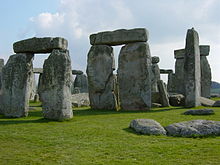|
Rispondi |
Messaggio 1 di 24 di questo argomento |
|
|
|
|
|
Rispondi |
Messaggio 10 di 24 di questo argomento |
|
|
|
|
Rispondi |
Messaggio 11 di 24 di questo argomento |
|
|
|
|
Rispondi |
Messaggio 12 di 24 di questo argomento |
|
|
|
|
Rispondi |
Messaggio 13 di 24 di questo argomento |
|

The James Webb telescope: part alien life detector, part time machine
In the lead-up to the launch of the James Webb telescope, we look at the scientific objectives of the most powerful space observatory ever sent into orbit.
Are we alone in the universe? What did the first galaxies formed after the Big Bang look like? How did the planets in our solar system emerge? The James Webb telescope hopes to find answers to these existential questions.
Set to launch on December 22, the James Webb is the product of the combined scientific prowess of NASA, the European Space Agency (ESA) and the Canadian Space Agency (CSA) – and by extension, Université de Montréal (UdeM). The CSA contributed a scientific instrument and a guidance sensor to the massive observatory and René Doyon, Director of UdeM’s Institute for Research on Exoplanets (iREx) and a professor in the Physics Department, is the principal investigator on the Canadian scientific team.
Together, the components supplied by the CSA, NASA and the ESA form the most complex, accurate and powerful space observatory ever built, one that promises revolutionary discoveries in astronomy.
The unparalleled power of the observatory will help scientists throughout the world scrutinize the distant reaches of the universe to learn more about the composition and inhabitability of exoplanets and study the life cycle of stars.
Exploring new worlds in search of life
The James Webb Telescope is the successor to the Hubble space telescope but is more precise and efficient because of the size of its mirror, the range of light it can detect and its location.
These attributes will enable the Webb to study the planets in our solar system and other planetary systems in unprecedented detail. Moreover, the scientific instrument developed by Doyon’s team is designed to analyze many types of celestial bodies, including the atmospheric composition of distant exoplanets.
“What we’re looking for, our holy grail, are ‘biosignatures,’ that is, signs of extraterrestrial life,” explained iREx coordinator Nathalie Ouellette, an astrophysicist who does communications for the James Webb.
She hastened to add that we shouldn’t imagine these signs of life the way they are depicted in science fiction films: “We’re talking about finding signs of biological activity or the signature of certain molecules that we have identified as essential to life, such as oxygen, water vapour, carbon dioxide, methane and ozone. Based on the presence of such molecules, particularly in certain combinations, we may be able to determine that conditions are conducive to the development of life when we explore an exoplanet using the telescope.”
Casting light on the dawn of the universe
Telescopes are also time machines of a sort. “Looking into space is like looking into the past,” said Ouellette. “Light waves travel so fast that, to the naked eye, they seem to flash instantly from one point to another. In space, however, the distances are so vast that the time it takes light to travel is perceptible.”
That makes the Webb a marvellous time machine. It will be able to see back in time to 200 million years after the Big Bang, something that has never been done before. “With the Hubble, we could go to 500 million years after the Big Bang, so now we’re going 300 million years further,” noted Ouellette. “That’s remarkable, considering that the beginning of the universe was a tumultuous period. Galaxies were colliding and stars were forming at a rapid pace.”
“Tell me where you come from and I’ll tell you who you are”
The Webb will thus improve our understanding of the development of the first luminous objects (galaxies) over time. Ouellette believes the telescope will also provide insight into the creation of our own solar system.
“We still have many questions about the origins of life in our solar system. We don’t know exactly how we came to be on Earth and how the planets were formed,” Ouellette pointed out. “By studying other systems, stars and planets at various stages of development, we hope to be able to trace our own history and understand ourselves better.”
That is the ultimate goal of the James Webb: to revolutionize our understanding of the universe and, above all, to place the Earth, in all its fragility and uniqueness, in a broader context.
https://nouvelles.umontreal.ca/en/article/2021/12/09/the-james-webb-telescope-part-alien-life-detector-part-time-machine/
|
|
|
|
Rispondi |
Messaggio 14 di 24 di questo argomento |
|
Arthur James Balfour, I conde de Balfour, KG, OM, PC (25 de julio de 1848-19 de marzo de 1930) fue un político, aristócrata y estadista británico que se convirtió en el trigésimo tercer primer ministro de ese país.
|
|
|
|
Rispondi |
Messaggio 15 di 24 di questo argomento |
|
|
|
| , MA History, BA History

Jesus Christ had twelve disciples, each of whom accompanied the Biblical savior during His time on earth. Many of them continued His Christian work after the ascension. The twelve men were Peter, James (Jesus’ brother), John, Andrew, Philip, Judas Iscariot (who betrayed Jesus, and was replaced by Matthias), Matthew, Thomas, James, the son of Alpheus, Bartholomew, Judas Thaddeus; and Simon the Zealot. Of them all, Saint James, also known as James, brother of Jesus, James, son of Alpheus, James the Lesser, James the Minor, and James the Just, was one of the most prominent and significant.
James, Son of Alphaeus, James the Greater, and James, the Brother of Jesus
 St James the Minor, Peter Paul Rubens, 1613. Source: Wikipedia St James the Minor, Peter Paul Rubens, 1613. Source: Wikipedia
Various Gospels are often ambiguous, at times, as to which James is being referenced. Two to three James’s are spoken of in the Gospels – James, brother of John (aka James the Greater); James, brother of Jesus, and James, son of Alphaeus. The Catholic doctrine of the perpetual virginity of Mary holds that James the son of Alpheus and James, brother of Jesus are the same person, as James could not be Jesus’ physical full brother. In Protestant readings, the two are separate. If the two are separate, then very little is known regarding James, son of Alpheus.
James, Brother of Jesus
 Statue of St. James the Less in the Archbasilica of St. John Lateran by Angelo de Rossi. Source: Wikipedia Statue of St. James the Less in the Archbasilica of St. John Lateran by Angelo de Rossi. Source: Wikipedia
James, the brother of Jesus, was a follower and Disciple of Jesus Christ during His earthly ministry and one of the first leaders of the early Christian Church. He remained in Jerusalem as leader of the church following the death, burial, resurrection, and ascension of Jesus, and was likely martyred at the temple in Jerusalem.
James’ Position in the Early Church
 St. James the Minor, by Georges de la Tour, 1615-20. Source: Wikipedia St. James the Minor, by Georges de la Tour, 1615-20. Source: Wikipedia
Get the latest articles delivered to your inbox
Sign up to our Free Weekly Newsletter
In Acts 15, a Council in Jerusalem was held regarding circumcision over which James presided. The Acts 15 Council is considered probably the first Christian council, where many Apostles congregated to discuss the matter brought by Paul and Barnabas. In Galatians 1, the Apostle Paul records a meeting with James in the process of Paul confirming his conversion to the other Apostles. James may have been the first elected leader within the early church. Through the writings of Eusebius in the 200s, we have the records of Clement of Alexandria from the second century that James was elected leader of the Jerusalem Church.
St James Was Martyred
 Saint James the Less (Menologion of Basil II). Source: The Byzantine Life Saint James the Less (Menologion of Basil II). Source: The Byzantine Life
The death of James the Just around 62 CE is recorded by Eusebius, Clement of Alexandria, and Josephus. Eusebius copied the chronicles of an earlier Christian, Hegesippus, who wrote that James was martyred by being thrown from the pinnacle of the temple in Jerusalem, and beaten with a club when the fall did not kill him.
Non-canonical Writings Attributed to Saint James
 The Protoevangelium of James, James Orr. Source: Rakuten Kobo The Protoevangelium of James, James Orr. Source: Rakuten Kobo
The Gospel of James, also known as The Protoevangelium of James, is a book of unknown source that was being circulated within the second century church. Both Origen and Clement of Alexandria reference the book in their writings, so it was at least written around that time. The Gospel of James contains the first mention of the idea of the perpetual virginity of Mary, the mother of Jesus. The book was condemned by Pope Innocent I in 405, and it has generally not been accepted throughout church history as canonical due to its late writing and inconstant content.
The First and Second Apocalypse of James and the Apocryphon of James are other 2nd century books whose author claimed to be James. Each of these books were from a collection of gnostic (secret knowledge) texts found in Egypt in 1945. In addition to an authorship too late to be James, they are also part of gnostic texts written in an attempt to legitimize the early movement within Christianity.
James, the Son of Alphaeus
 Two Martyr Saints in an Initial S (Alphaeus and Zacchaeus), 14th century. Source: Victoria and Albert Museum Two Martyr Saints in an Initial S (Alphaeus and Zacchaeus), 14th century. Source: Victoria and Albert Museum
James the son of Alphaeus, while mentioned in the listings of the apostles, has very few details known regarding his life. Outside of being listed among the apostles, and described in the Gospel of Mark as “the lesser” or “the smaller,” he is barely mentioned in the Bible. Several early Christian writings attempt to identify him with James the Just, but most try to maintain the perpetual virginity of Mary in a complex manner. It is speculated that he died as a martyr by crucifixion in Ostrakine, Egypt.
https://www.thecollector.com/who-was-saint-james-brother-of-jesus/ |
|
|
|
|
|
|
Rispondi |
Messaggio 16 di 24 di questo argomento |
|
|
|
|
Rispondi |
Messaggio 17 di 24 di questo argomento |
|
|
|
|
Rispondi |
Messaggio 18 di 24 di questo argomento |
|
|
|
|
Rispondi |
Messaggio 19 di 24 di questo argomento |
|

Hoja informativa del proyecto Viking
Cortesía de la NASA
Viking fue la culminación de una serie de misiones para explorar el planeta Marte ; comenzaron en 1964 con el Mariner 4, y continuaron con los sobrevuelos del Mariner 6 y 7 en 1969, y la misión orbital del Mariner 9 en 1971 y 1972.
La Viking fue diseñada para orbitar Marte y aterrizar y operar en la superficie del planeta. Se construyeron dos naves espaciales idénticas, cada una compuesta por un módulo de aterrizaje y un orbitador.
El Centro de Investigación Langley de la NASA en Hampton, Virginia, fue el responsable de la gestión del proyecto Viking desde su inicio en 1968 hasta el 1 de abril de 1978, cuando el Laboratorio de Propulsión a Chorro asumió la tarea. Martin Marietta Aerospace en Denver, Colorado, desarrolló los módulos de aterrizaje. El Centro de Investigación Lewis de la NASA en Cleveland, Ohio, fue el responsable de los vehículos de lanzamiento Titán-Centauro. La tarea inicial del JPL fue el desarrollo de los orbitadores, el seguimiento y la adquisición de datos, y el Centro de Control de Misión y Computación.
La NASA lanzó ambas naves espaciales desde Cabo Cañaveral, Florida: la Viking 1 el 20 de agosto de 1975 y la Viking 2 el 9 de septiembre de 1975. Las sondas fueron esterilizadas antes del lanzamiento para evitar la contaminación de Marte con organismos de la Tierra. La nave espacial pasó casi un año navegando hacia Marte. La Viking 1 alcanzó la órbita de Marte el 19 de junio de 1976; la Viking 2 comenzó a orbitar Marte el 7 de agosto de 1976.
Después de estudiar las fotografías del orbitador, el equipo de certificación del sitio de aterrizaje de Viking consideró que el lugar de aterrizaje original de Viking 1 no era seguro. El equipo examinó los sitios cercanos y Viking 1 aterrizó el 20 de julio de 1976 en la ladera occidental de Chryse Planitia (las llanuras de oro) a 22,3° de latitud norte y 48,0° de longitud.
El equipo de certificación del sitio también decidió que el lugar de aterrizaje planeado para Viking 2 no era seguro después de examinar fotografías de alta resolución. La certificación de un nuevo lugar de aterrizaje se llevó a cabo a tiempo para un aterrizaje en Marte el 3 de septiembre de 1976, en Utopia Planitia, a 47,7° de latitud norte y 225,8° de longitud.
La misión Viking estaba prevista para continuar durante 90 días después del aterrizaje. Cada orbitador y módulo de aterrizaje funcionó mucho más allá de su vida útil prevista. El Viking Orbiter 1 superó los cuatro años de operaciones de vuelo activas en la órbita de Marte.
La misión principal del proyecto Viking finalizó el 15 de noviembre de 1976, 11 días antes de la conjunción superior de Marte (su paso por detrás del Sol). Después de la conjunción, a mediados de diciembre de 1976, los controladores restablecieron las operaciones de telemetría y comando y comenzaron las operaciones de la misión extendida.
La primera nave espacial que dejó de funcionar fue la Viking Orbiter 2 el 25 de julio de 1978; la nave espacial había utilizado todo el gas de su sistema de control de actitud, que mantenía los paneles solares de la nave apuntando al Sol para alimentar el orbitador. Cuando la nave espacial se alejó de la línea del Sol, los controladores del JPL enviaron órdenes para apagar el transmisor de la Viking Orbiter 2.
En 1978, la Viking Orbiter 1 empezó a quedarse sin gas para el control de actitud, pero gracias a una cuidadosa planificación para conservar el suministro restante, los ingenieros descubrieron que era posible seguir adquiriendo datos científicos a un nivel reducido durante otros dos años. El suministro de gas finalmente se agotó y la Viking Orbiter 1 dejó de funcionar el 7 de agosto de 1980, después de 1.489 órbitas alrededor de Marte.
Los últimos datos de la sonda Viking Lander 2 llegaron a la Tierra el 11 de abril de 1980. La sonda Lander 1 realizó su última transmisión a la Tierra el 11 de noviembre de 1982. Los controladores del JPL intentaron, sin éxito, durante otros seis meses y medio recuperar el contacto con la sonda Viking Lander 1. La misión finalizó el 21 de mayo de 1983.
Con una sola excepción (los instrumentos sísmicos), los instrumentos científicos adquirieron más datos de los esperados. El sismómetro de la sonda Viking Lander 1 no funcionó después del aterrizaje y el sismómetro de la sonda Viking Lander 2 detectó solo un evento que pudo haber sido sísmico. Sin embargo, proporcionó datos sobre la velocidad del viento en el lugar de aterrizaje para complementar la información del experimento meteorológico y mostró que Marte tiene un fondo sísmico muy bajo.
Los tres experimentos de biología descubrieron una actividad química inesperada y enigmática en el suelo marciano, pero no aportaron pruebas claras de la presencia de microorganismos vivos en el suelo cercano a los lugares de aterrizaje. Según los biólogos de la misión, Marte se autoesteriliza. Creen que la combinación de la radiación ultravioleta solar que satura la superficie, la extrema sequedad del suelo y la naturaleza oxidante de la química del suelo impiden la formación de organismos vivos en el suelo marciano. La cuestión de si hubo vida en Marte en algún momento del pasado lejano sigue abierta.
Los instrumentos de cromatografía de gases y espectrómetro de masas de los módulos de aterrizaje no detectaron ningún signo de química orgánica en ninguno de los dos lugares de aterrizaje, pero sí proporcionaron un análisis preciso y definitivo de la composición de la atmósfera marciana y encontraron elementos traza no detectados anteriormente. Los espectrómetros de fluorescencia de rayos X midieron la composición elemental del suelo marciano.
La sonda Viking midió las propiedades físicas y magnéticas del suelo. A medida que descendían hacia la superficie, también midieron la composición y las propiedades físicas de la atmósfera superior marciana.
Los dos módulos de aterrizaje monitorizaron continuamente el tiempo en los lugares de aterrizaje. El tiempo en pleno verano marciano era repetitivo, pero en otras estaciones se volvía variable y más interesante. Aparecieron variaciones cíclicas en los patrones meteorológicos (probablemente el paso de ciclones y anticiclones alternos). Las temperaturas atmosféricas en el lugar de aterrizaje sur (Viking Lander 1) fueron tan altas como -14 °C (7 °F) al mediodía, y la temperatura de verano antes del amanecer fue de -77 °C (-107 °F). En contraste, las temperaturas diurnas en el lugar de aterrizaje norte (Viking Lander 2) durante las tormentas de polvo de mediados de invierno variaron tan poco como 4 °C (7 °F) algunos días. La temperatura más baja antes del amanecer fue de -120 °C (-184 °F), aproximadamente el punto de congelación del dióxido de carbono. Una fina capa de escarcha de agua cubría el suelo alrededor de Viking Lander 2 cada invierno.
La presión barométrica varía en cada lugar de aterrizaje cada seis meses, porque el dióxido de carbono, el principal componente de la atmósfera, se congela formando un inmenso casquete polar, alternativamente en cada polo. El dióxido de carbono forma una gran capa de nieve y luego se evapora de nuevo con la llegada de la primavera en cada hemisferio. Cuando el casquete polar sur era más grande, la presión media diaria observada por la Viking Lander 1 era tan baja como 6,8 milibares; en otras épocas del año era tan alta como 9,0 milibares. Las presiones en el lugar de aterrizaje de la Viking Lander 2 fueron de 7,3 y 10,8 milibares. (A modo de comparación, la presión superficial en la Tierra a nivel del mar es de unos 1.000 milibares).
Los vientos marcianos suelen soplar más lentamente de lo esperado. Los científicos habían esperado que alcanzaran velocidades de varios cientos de kilómetros por hora a partir de las tormentas de polvo globales observadas, pero ninguno de los módulos de aterrizaje registró ráfagas superiores a los 120 kilómetros por hora y las velocidades medias fueron considerablemente inferiores. No obstante, los orbitadores observaron más de una docena de pequeñas tormentas de polvo. Durante el primer verano austral se produjeron dos tormentas de polvo globales, con una diferencia de unos cuatro meses terrestres. Ambas tormentas oscurecieron el Sol en los lugares de aterrizaje durante un tiempo y ocultaron la mayor parte de la superficie del planeta a las cámaras de los orbitadores. Los fuertes vientos que provocaron las tormentas soplaron en el hemisferio sur.
Las fotografías tomadas desde los módulos de aterrizaje y los orbitadores superaron las expectativas en cuanto a calidad y calidad. El total superó las 4.500 tomadas desde los módulos de aterrizaje y las 52.000 tomadas desde los orbitadores. Los módulos de aterrizaje proporcionaron la primera mirada de cerca a la superficie, monitorearon las variaciones en la opacidad atmosférica a lo largo de varios años marcianos y determinaron el tamaño medio de los aerosoles atmosféricos. Las cámaras de los orbitadores observaron terrenos nuevos y a menudo desconcertantes y proporcionaron detalles más claros sobre características conocidas, incluidas algunas observaciones en color y estéreo. Los orbitadores de Viking cartografiaron el 97 por ciento de la superficie marciana.
Los cartografiadores térmicos infrarrojos y los detectores de agua atmosférica de los orbitadores adquirieron datos casi a diario, observando el planeta en baja y alta resolución. La enorme cantidad de datos de los dos instrumentos requerirá un tiempo considerable para el análisis y la comprensión de la meteorología global de Marte. Viking también determinó definitivamente que el manto de hielo residual del polo norte (que sobrevive al verano boreal) es hielo de agua, en lugar de dióxido de carbono congelado (hielo seco) como se creía anteriormente.
El análisis de las señales de radio de los módulos de aterrizaje y los orbitadores (incluidos los datos Doppler, de distancia y de ocultación, y la intensidad de la señal del enlace de retransmisión entre el módulo de aterrizaje y el orbitador) proporcionó una variedad de información valiosa.
Otros descubrimientos importantes de la misión Viking incluyen:
- La superficie marciana es un tipo de arcilla rica en hierro que contiene una sustancia altamente oxidante que libera oxígeno cuando se moja.
- La superficie no contiene moléculas orgánicas detectables a nivel de partes por mil millones: menos, de hecho, que las muestras de suelo traídas de la Luna por los astronautas del Apolo.
- El nitrógeno, nunca antes detectado, es un componente significativo de la atmósfera marciana, y el enriquecimiento de los isótopos más pesados de nitrógeno y argón en relación con los isótopos más ligeros implica que la densidad atmosférica era mucho mayor que en el pasado distante.
- Los cambios en la superficie marciana se producen con extrema lentitud, al menos en los lugares de aterrizaje de la sonda Viking. Durante la duración de la misión, solo se produjeron unos pocos cambios menores.
- La mayor concentración de vapor de agua en la atmósfera se da cerca del borde del casquete polar norte a mediados del verano. Desde el verano hasta el otoño, la concentración máxima se desplaza hacia el ecuador, con una disminución del 30 por ciento en la abundancia máxima. En el verano austral, el planeta está seco, probablemente también como efecto de las tormentas de polvo.
- La densidad de ambos satélites de Marte es baja (unos dos gramos por centímetro cúbico), lo que implica que se originaron como asteroides capturados por la gravedad de Marte. La superficie de Fobos está marcada por dos familias de estrías paralelas, probablemente fracturas causadas por un gran impacto que casi pudo haber destrozado a Fobos.
- Las mediciones del tiempo de ida y vuelta de las señales de radio entre la Tierra y la sonda Viking, realizadas mientras Marte se encontraba más allá del Sol (cerca de las conjunciones solares), han determinado que el retraso de las señales es causado por el campo gravitatorio del Sol. El resultado confirma la predicción de Albert Einstein con una precisión estimada del 0,1 por ciento, veinte veces mayor que cualquier otra prueba.
- La presión atmosférica varía un 30 por ciento durante el año marciano porque el dióxido de carbono se condensa y sublima en los casquetes polares.
- La capa norte permanente es hielo de agua; la capa sur probablemente retiene algo de hielo de dióxido de carbono durante el verano.
- El vapor de agua es relativamente abundante sólo en el extremo norte durante el verano, pero el agua subterránea (permafrost) cubre gran parte, si no todo, del planeta.
- Los hemisferios norte y sur son drásticamente diferentes climáticamente, debido a las tormentas de polvo globales que se originan en el sur en verano.
https://solarviews-com.translate.goog/span/vikingfs.htm?_x_tr_sl=en&_x_tr_tl=es&_x_tr_hl=es&_x_tr_pto=sc
|
|
|
|
Rispondi |
Messaggio 20 di 24 di questo argomento |
|
Choose a Background
 Matthew 27:56 Among which was Mary Magdalene, and Mary the mother of James and Joses, and the mother of Zebedees children. Matthew 27:56 Among which was Mary Magdalene, and Mary the mother of James and Joses, and the mother of Zebedees children.
KJV: Among which was Mary Magdalene, and Mary the mother of James and Joses, and the mother of Zebedee's children.
DRB: Among whom was Mary Magdalen, and Mary the mother of James and Joseph, and the mother of the sons of Zebedee.
DBT: among whom was Mary of Magdala, and Mary the mother of James and Joses, and the mother of the sons of Zebedee.
ERV: among whom was Mary Magdalene, and Mary the mother of James and Joses, and the mother of the sons of Zebedee.
WBT: Among whom was Mary Magdalene, and Mary the mother of James and Joses, and the mother of Zebedee's children.
WEB: Among them were Mary Magdalene, Mary the mother of James and Joses, and the mother of the sons of Zebedee.
YLT: among whom was Mary the Magdalene, and Mary the mother of James and of Joses, and the mother of the sons of Zebedee.
Links
Matthew 27:56 NIV • Matthew 27:56 NLT • Matthew 27:56 ESV • Matthew 27:56 NASB • Matthew 27:56 KJV • Matthew 27:56 Interlinear • Matthew 27:56 Commentaries • Matthew 27:56 Parallel Texts • Matthew 27:56 Bible Apps • Matthew 27:56 Parallel • Bible Hub
|
|
|
|
|
Rispondi |
Messaggio 21 di 24 di questo argomento |
|
|
|
|
Rispondi |
Messaggio 22 di 24 di questo argomento |
|
July 25 Events in History
July 25th has witnessed a series of pivotal events that have shaped the course of history across various fields.
From groundbreaking achievements in aviation and medical science to significant political shifts and cultural moments, this day encapsulates a diverse array of historical milestones.
Join us as we explore some of the most notable occurrences on this date, delving into their impacts and legacies that continue to resonate today.
July 25th – On this Day in History
306 – Constantine I proclaimed Roman Emperor
On July 25, 306, Constantine the Great was declared Roman Emperor by his troops after the death of his father, Constantius Chlorus, in Eboracum (modern-day York, England).
This proclamation marked the beginning of Constantine’s reign, during which he would play a crucial role in shaping the future of the Roman Empire.
Also Read: July 24 Events in History
His subsequent policies and reforms, including the Edict of Milan in 313, which granted religious tolerance to Christians, had a lasting impact on both the empire and the Christian religion. Constantine’s rule laid the foundation for the Byzantine Empire and the spread of Christianity throughout Europe.
315 – Arch of Constantine inaugurated in Rome
The Arch of Constantine, one of Rome’s most famous monuments, was inaugurated on July 25, 315. Erected to commemorate Constantine I’s victory over Maxentius at the Battle of the Milvian Bridge in 312, the arch stands near the Colosseum.
It is a triumphal arch adorned with sculptures and reliefs that celebrate Constantine’s victory and his consolidation of power.
The arch not only served as a political symbol of Constantine’s authority but also showcased the artistic and architectural styles of the time, incorporating elements from earlier monuments to glorify the emperor’s achievements.
1261 – Constantinople recaptured by Nicaean forces, ending the Latin Empire
On July 25, 1261, forces from the Empire of Nicaea recaptured Constantinople, ending the Latin Empire established by the Fourth Crusade in 1204. This event marked the restoration of the Byzantine Empire under Emperor Michael VIII Palaiologos.
Also Read: July 26th – On this Day in History
The recapture of the city was a significant turning point, as it restored Byzantine control over its historic capital. However, the empire never fully recovered its former power and prestige, struggling against internal strife and external threats until its eventual fall to the Ottoman Turks in 1453.
1593 – Henry IV of France converted from Protestantism to Catholicism
On July 25, 1593, Henry IV of France converted from Protestantism to Catholicism, famously stating, “Paris is well worth a mass.” This pragmatic decision was made to secure his position as king and bring peace to a country torn apart by religious wars.
His conversion helped to end the French Wars of Religion, a series of conflicts between Catholics and Huguenots (French Protestants), and paved the way for the Edict of Nantes in 1598, which granted religious tolerance to Protestants.
Henry IV’s reign brought stability and prosperity to France and earned him the nickname “Good King Henry.”
1759 – French defeated at the Battle of Ticonderoga in the Seven Years’ War
On July 25, 1759, during the Seven Years’ War, British forces under General Jeffrey Amherst captured the French stronghold of Fort Carillon (later renamed Fort Ticonderoga) in present-day New York. This victory was part of a larger campaign to gain control over the strategic waterways of North America.
The fall of Ticonderoga marked a turning point in the war in favor of the British, who sought to expand their colonial territories at the expense of the French. The victory opened the way for further British advances into Canada and played a significant role in shaping the future of North America.
1797 – Horatio Nelson lost more than 300 men and his right arm during the failed conquest of Tenerife
On July 25, 1797, British Admiral Horatio Nelson led an attack on Santa Cruz de Tenerife in the Canary Islands during the French Revolutionary Wars. The expedition aimed to capture the strategic port, but it ended in failure.
During the battle, Nelson sustained a severe wound, resulting in the amputation of his right arm. Despite this setback, he displayed remarkable resilience and continued his naval career, eventually becoming one of Britain’s greatest naval heroes. This event highlighted his determination and contributed to his legendary status.
1814 – War of 1812: Battle of Lundy’s Lane, one of the bloodiest battles of the war, takes place
The Battle of Lundy’s Lane, one of the bloodiest battles of the War of 1812, took place on July 25, 1814, near Niagara Falls. American and British forces clashed in a fierce and indecisive engagement that lasted well into the night.
Despite high casualties on both sides, neither could claim a decisive victory. The battle demonstrated the intensity of the conflict along the Canadian-American border and underscored the strategic stalemate that characterized much of the war. It also highlighted the valor and resilience of both American and British troops.
1837 – First commercial use of an electric telegraph
On July 25, 1837, the first commercial use of an electric telegraph took place, marking a significant advancement in communication technology.
Developed by William Fothergill Cooke and Charles Wheatstone in England, the telegraph revolutionized long-distance communication by transmitting messages through electrical signals over wires.
This innovation laid the groundwork for the global telecommunications industry, transforming how information was shared and playing a crucial role in commerce, journalism, and personal communication.
1861 – Congress passed the Crittenden-Johnson Resolution, stating the Civil War was fought to preserve the Union, not to end slavery
On July 25, 1861, the United States Congress passed the Crittenden-Johnson Resolution, asserting that the ongoing Civil War was being fought to preserve the Union, not to interfere with slavery. This resolution aimed to maintain the loyalty of the border states and reassure Northerners who were concerned about the war’s purpose.
However, as the war progressed, the focus shifted increasingly towards the abolition of slavery, especially after the issuance of the Emancipation Proclamation in 1863. The resolution reflects the complex and evolving motivations behind the Union’s war effort.
1866 – Ulysses S. Grant became the first General of the Army
On July 25, 1866, Ulysses S. Grant was appointed as the first General of the Army, a newly created rank in the United States military.
This appointment recognized Grant’s leadership and success as a Union general during the Civil War, particularly his role in key victories at battles such as Vicksburg and Appomattox.
As General of the Army, Grant oversaw the post-war military and played a significant role in Reconstruction efforts. His leadership and strategic acumen contributed to his later election as the 18th President of the United States.
1898 – United States invades Puerto Rico during the Spanish-American War
On July 25, 1898, during the Spanish-American War, American forces led by General Nelson A. Miles invaded Puerto Rico. This military action was part of a larger campaign against Spanish colonial rule in the Caribbean and the Pacific. The invasion was relatively swift, facing limited resistance from Spanish troops.
The conflict resulted in the Treaty of Paris, which ceded Puerto Rico, Guam, and the Philippines to the United States, significantly expanding American influence and marking a turning point in U.S. imperialism.
1909 – Louis Blériot makes the first flight across the English Channel in a heavier-than-air machine
On July 25, 1909, French aviator Louis Blériot made history by becoming the first person to fly across the English Channel in a heavier-than-air aircraft. He piloted his Blériot XI monoplane from Calais, France, to Dover, England, covering the distance in about 37 minutes.
This achievement demonstrated the potential of aviation and marked a significant milestone in the development of powered flight. Blériot’s successful crossing captured the public’s imagination and paved the way for future advancements in aviation technology and commercial air travel.
1917 – Mata Hari sentenced to death for espionage
On July 25, 1917, the renowned dancer and courtesan Mata Hari was sentenced to death by a French military court for espionage during World War I.
Accused of spying for Germany, she was portrayed as a dangerous femme fatale, although the evidence against her was largely circumstantial.
Her trial and execution highlighted the paranoia and fear of espionage that pervaded wartime Europe. Mata Hari’s story has since become legendary, symbolizing the intrigue and moral complexities of espionage during the war.
1943 – Benito Mussolini dismissed as Italian premier; arrested
On July 25, 1943, Italian dictator Benito Mussolini was dismissed from power by King Victor Emmanuel III and subsequently arrested.
This event marked a turning point in World War II, as Mussolini’s downfall signaled the collapse of the Fascist regime in Italy. It also led to Italy’s eventual surrender to the Allies.
The dismissal was influenced by military defeats and widespread dissatisfaction with Mussolini’s leadership. His arrest set the stage for a period of political turmoil in Italy and a shift in the balance of power in the war.
1956 – Suez Crisis: Egyptian President Nasser nationalized the Suez Canal
On July 25, 1956, Egyptian President Gamal Abdel Nasser nationalized the Suez Canal, previously controlled by British and French interests. This bold move aimed to fund the construction of the Aswan High Dam and assert Egypt’s sovereignty.
The nationalization led to the Suez Crisis, where Britain, France, and Israel launched a military intervention to regain control of the canal. The crisis highlighted the waning influence of European colonial powers and the rising importance of Middle Eastern geopolitics during the Cold War. It also marked a significant moment in the decolonization movement.
1965 – Bob Dylan controversially used electric instruments at the Newport Folk Festival
On July 25, 1965, Bob Dylan performed with an electric band at the Newport Folk Festival, marking a significant shift in his musical style. This performance was controversial, as Dylan was primarily known for his acoustic folk music.
The audience’s reaction was mixed, with some embracing the new sound and others feeling betrayed. This moment is often seen as a pivotal point in rock music history, symbolizing the merging of folk and rock genres and highlighting Dylan’s evolving artistry.
1978 – Birth of Louise Brown, the first test-tube baby
On July 25, 1978, Louise Brown, the world’s first baby conceived through in vitro fertilization (IVF), was born in England. Her birth marked a groundbreaking achievement in reproductive technology, offering hope to millions of couples struggling with infertility.
The successful use of IVF opened new possibilities for assisted reproductive treatments and sparked discussions about the ethical and social implications of such technologies. Louise Brown’s birth is celebrated as a milestone in medical science.
1984 – Cosmonaut Svetlana Savitskaya became the first woman to perform a spacewalk
On July 25, 1984, Soviet cosmonaut Svetlana Savitskaya became the first woman to perform a spacewalk. During her mission aboard the Salyut 7 space station, she conducted an extravehicular activity (EVA) that lasted nearly four hours.
This achievement not only highlighted her skills and bravery but also underscored the contributions of women in space exploration. Savitskaya’s spacewalk was a significant step forward for gender equality in the field of astronautics.
1994 – Israel and Jordan sign the Washington Declaration, formally ending the state of war
On July 25, 1994, Israel and Jordan signed the Washington Declaration, officially ending the state of war between the two nations. This agreement was a crucial step towards peace in the Middle East, facilitated by the United States.
It laid the groundwork for the Israel-Jordan Peace Treaty later that year, fostering improved diplomatic and economic relations. The declaration represented a significant move towards regional stability and cooperation.
2000 – Air France Flight 4590 crashes on takeoff in Paris, killing 113
On July 25, 2000, Air France Flight 4590, a Concorde supersonic airliner, crashed shortly after takeoff from Charles de Gaulle Airport in Paris. All 109 passengers and crew on board, along with four people on the ground, were killed.
The crash was caused by a strip of metal left on the runway by another aircraft, which led to a tire explosion and subsequent fuel tank rupture. This tragic event marked the beginning of the end for the Concorde program, highlighting safety concerns and contributing to the aircraft’s eventual retirement in 2003.
https://www.havefunwithhistory.com/july-25/ |
|
|
|
Rispondi |
Messaggio 23 di 24 di questo argomento |
|

July 25 Events in History
June 18, 2024
July 25th has witnessed a series of pivotal events that have shaped the course of history across various fields.
From groundbreaking achievements in aviation and medical science to significant political shifts and cultural moments, this day encapsulates a diverse array of historical milestones.
Join us as we explore some of the most notable occurrences on this date, delving into their impacts and legacies that continue to resonate today.
July 25th – On this Day in History
306 – Constantine I proclaimed Roman Emperor
On July 25, 306, Constantine the Great was declared Roman Emperor by his troops after the death of his father, Constantius Chlorus, in Eboracum (modern-day York, England).
This proclamation marked the beginning of Constantine’s reign, during which he would play a crucial role in shaping the future of the Roman Empire.
Also Read: July 24 Events in History
His subsequent policies and reforms, including the Edict of Milan in 313, which granted religious tolerance to Christians, had a lasting impact on both the empire and the Christian religion. Constantine’s rule laid the foundation for the Byzantine Empire and the spread of Christianity throughout Europe.
315 – Arch of Constantine inaugurated in Rome
The Arch of Constantine, one of Rome’s most famous monuments, was inaugurated on July 25, 315. Erected to commemorate Constantine I’s victory over Maxentius at the Battle of the Milvian Bridge in 312, the arch stands near the Colosseum.
It is a triumphal arch adorned with sculptures and reliefs that celebrate Constantine’s victory and his consolidation of power.
The arch not only served as a political symbol of Constantine’s authority but also showcased the artistic and architectural styles of the time, incorporating elements from earlier monuments to glorify the emperor’s achievements.
1261 – Constantinople recaptured by Nicaean forces, ending the Latin Empire
On July 25, 1261, forces from the Empire of Nicaea recaptured Constantinople, ending the Latin Empire established by the Fourth Crusade in 1204. This event marked the restoration of the Byzantine Empire under Emperor Michael VIII Palaiologos.
Also Read: July 26th – On this Day in History
The recapture of the city was a significant turning point, as it restored Byzantine control over its historic capital. However, the empire never fully recovered its former power and prestige, struggling against internal strife and external threats until its eventual fall to the Ottoman Turks in 1453.
1593 – Henry IV of France converted from Protestantism to Catholicism
On July 25, 1593, Henry IV of France converted from Protestantism to Catholicism, famously stating, “Paris is well worth a mass.” This pragmatic decision was made to secure his position as king and bring peace to a country torn apart by religious wars.
His conversion helped to end the French Wars of Religion, a series of conflicts between Catholics and Huguenots (French Protestants), and paved the way for the Edict of Nantes in 1598, which granted religious tolerance to Protestants.
Henry IV’s reign brought stability and prosperity to France and earned him the nickname “Good King Henry.”
1759 – French defeated at the Battle of Ticonderoga in the Seven Years’ War
On July 25, 1759, during the Seven Years’ War, British forces under General Jeffrey Amherst captured the French stronghold of Fort Carillon (later renamed Fort Ticonderoga) in present-day New York. This victory was part of a larger campaign to gain control over the strategic waterways of North America.
The fall of Ticonderoga marked a turning point in the war in favor of the British, who sought to expand their colonial territories at the expense of the French. The victory opened the way for further British advances into Canada and played a significant role in shaping the future of North America.
1797 – Horatio Nelson lost more than 300 men and his right arm during the failed conquest of Tenerife
On July 25, 1797, British Admiral Horatio Nelson led an attack on Santa Cruz de Tenerife in the Canary Islands during the French Revolutionary Wars. The expedition aimed to capture the strategic port, but it ended in failure.
During the battle, Nelson sustained a severe wound, resulting in the amputation of his right arm. Despite this setback, he displayed remarkable resilience and continued his naval career, eventually becoming one of Britain’s greatest naval heroes. This event highlighted his determination and contributed to his legendary status.
1814 – War of 1812: Battle of Lundy’s Lane, one of the bloodiest battles of the war, takes place
The Battle of Lundy’s Lane, one of the bloodiest battles of the War of 1812, took place on July 25, 1814, near Niagara Falls. American and British forces clashed in a fierce and indecisive engagement that lasted well into the night.
Despite high casualties on both sides, neither could claim a decisive victory. The battle demonstrated the intensity of the conflict along the Canadian-American border and underscored the strategic stalemate that characterized much of the war. It also highlighted the valor and resilience of both American and British troops.
1837 – First commercial use of an electric telegraph
On July 25, 1837, the first commercial use of an electric telegraph took place, marking a significant advancement in communication technology.
Developed by William Fothergill Cooke and Charles Wheatstone in England, the telegraph revolutionized long-distance communication by transmitting messages through electrical signals over wires.
This innovation laid the groundwork for the global telecommunications industry, transforming how information was shared and playing a crucial role in commerce, journalism, and personal communication.
1861 – Congress passed the Crittenden-Johnson Resolution, stating the Civil War was fought to preserve the Union, not to end slavery
On July 25, 1861, the United States Congress passed the Crittenden-Johnson Resolution, asserting that the ongoing Civil War was being fought to preserve the Union, not to interfere with slavery. This resolution aimed to maintain the loyalty of the border states and reassure Northerners who were concerned about the war’s purpose.
However, as the war progressed, the focus shifted increasingly towards the abolition of slavery, especially after the issuance of the Emancipation Proclamation in 1863. The resolution reflects the complex and evolving motivations behind the Union’s war effort.
1866 – Ulysses S. Grant became the first General of the Army
On July 25, 1866, Ulysses S. Grant was appointed as the first General of the Army, a newly created rank in the United States military.
This appointment recognized Grant’s leadership and success as a Union general during the Civil War, particularly his role in key victories at battles such as Vicksburg and Appomattox.
As General of the Army, Grant oversaw the post-war military and played a significant role in Reconstruction efforts. His leadership and strategic acumen contributed to his later election as the 18th President of the United States.
1898 – United States invades Puerto Rico during the Spanish-American War
On July 25, 1898, during the Spanish-American War, American forces led by General Nelson A. Miles invaded Puerto Rico. This military action was part of a larger campaign against Spanish colonial rule in the Caribbean and the Pacific. The invasion was relatively swift, facing limited resistance from Spanish troops.
The conflict resulted in the Treaty of Paris, which ceded Puerto Rico, Guam, and the Philippines to the United States, significantly expanding American influence and marking a turning point in U.S. imperialism.
1909 – Louis Blériot makes the first flight across the English Channel in a heavier-than-air machine
On July 25, 1909, French aviator Louis Blériot made history by becoming the first person to fly across the English Channel in a heavier-than-air aircraft. He piloted his Blériot XI monoplane from Calais, France, to Dover, England, covering the distance in about 37 minutes.
This achievement demonstrated the potential of aviation and marked a significant milestone in the development of powered flight. Blériot’s successful crossing captured the public’s imagination and paved the way for future advancements in aviation technology and commercial air travel.
1917 – Mata Hari sentenced to death for espionage
On July 25, 1917, the renowned dancer and courtesan Mata Hari was sentenced to death by a French military court for espionage during World War I.
Accused of spying for Germany, she was portrayed as a dangerous femme fatale, although the evidence against her was largely circumstantial.
Her trial and execution highlighted the paranoia and fear of espionage that pervaded wartime Europe. Mata Hari’s story has since become legendary, symbolizing the intrigue and moral complexities of espionage during the war.
1943 – Benito Mussolini dismissed as Italian premier; arrested
On July 25, 1943, Italian dictator Benito Mussolini was dismissed from power by King Victor Emmanuel III and subsequently arrested.
This event marked a turning point in World War II, as Mussolini’s downfall signaled the collapse of the Fascist regime in Italy. It also led to Italy’s eventual surrender to the Allies.
The dismissal was influenced by military defeats and widespread dissatisfaction with Mussolini’s leadership. His arrest set the stage for a period of political turmoil in Italy and a shift in the balance of power in the war.
1956 – Suez Crisis: Egyptian President Nasser nationalized the Suez Canal
On July 25, 1956, Egyptian President Gamal Abdel Nasser nationalized the Suez Canal, previously controlled by British and French interests. This bold move aimed to fund the construction of the Aswan High Dam and assert Egypt’s sovereignty.
The nationalization led to the Suez Crisis, where Britain, France, and Israel launched a military intervention to regain control of the canal. The crisis highlighted the waning influence of European colonial powers and the rising importance of Middle Eastern geopolitics during the Cold War. It also marked a significant moment in the decolonization movement.
1965 – Bob Dylan controversially used electric instruments at the Newport Folk Festival
On July 25, 1965, Bob Dylan performed with an electric band at the Newport Folk Festival, marking a significant shift in his musical style. This performance was controversial, as Dylan was primarily known for his acoustic folk music.
The audience’s reaction was mixed, with some embracing the new sound and others feeling betrayed. This moment is often seen as a pivotal point in rock music history, symbolizing the merging of folk and rock genres and highlighting Dylan’s evolving artistry.
1978 – Birth of Louise Brown, the first test-tube baby
On July 25, 1978, Louise Brown, the world’s first baby conceived through in vitro fertilization (IVF), was born in England. Her birth marked a groundbreaking achievement in reproductive technology, offering hope to millions of couples struggling with infertility.
The successful use of IVF opened new possibilities for assisted reproductive treatments and sparked discussions about the ethical and social implications of such technologies. Louise Brown’s birth is celebrated as a milestone in medical science.
1984 – Cosmonaut Svetlana Savitskaya became the first woman to perform a spacewalk
On July 25, 1984, Soviet cosmonaut Svetlana Savitskaya became the first woman to perform a spacewalk. During her mission aboard the Salyut 7 space station, she conducted an extravehicular activity (EVA) that lasted nearly four hours.
This achievement not only highlighted her skills and bravery but also underscored the contributions of women in space exploration. Savitskaya’s spacewalk was a significant step forward for gender equality in the field of astronautics.
1994 – Israel and Jordan sign the Washington Declaration, formally ending the state of war
On July 25, 1994, Israel and Jordan signed the Washington Declaration, officially ending the state of war between the two nations. This agreement was a crucial step towards peace in the Middle East, facilitated by the United States.
It laid the groundwork for the Israel-Jordan Peace Treaty later that year, fostering improved diplomatic and economic relations. The declaration represented a significant move towards regional stability and cooperation.
2000 – Air France Flight 4590 crashes on takeoff in Paris, killing 113
On July 25, 2000, Air France Flight 4590, a Concorde supersonic airliner, crashed shortly after takeoff from Charles de Gaulle Airport in Paris. All 109 passengers and crew on board, along with four people on the ground, were killed.
The crash was caused by a strip of metal left on the runway by another aircraft, which led to a tire explosion and subsequent fuel tank rupture. This tragic event marked the beginning of the end for the Concorde program, highlighting safety concerns and contributing to the aircraft’s eventual retirement in 2003.
https://www.havefunwithhistory.com/july-25/ |
|
|
 Primer Primer  Anterior 2 a 2 de 2 Siguiente Anterior 2 a 2 de 2 Siguiente  Último Último  |
|
|
|
|
Rispondi |
Messaggio 24 di 24 di questo argomento |
|

 
    
  ![Stargate Special Edition [Reino Unido] [DVD]: Amazon.es: Kurt Russell: Películas y TV](https://m.media-amazon.com/images/I/51Gr2lgt03L.jpg)
LA SANGRE DEL CORDERO EN EL DINTEL, EN CONTEXTO AL EXODO PASCUAL, ES UN TIPO DEL GRIAL
1. Éxodo 12:7: Y tomarán de la sangre, y la pondrán en los dos postes y en el DINTEL de las casas en que lo han de comer.
2. Éxodo 12:22: Y tomad un manojo de hisopo, y mojadlo en la sangre que estará en un lebrillo, y untad el DINTEL y los dos postes con la sangre que estará en el lebrillo; y ninguno de vosotros salga de las puertas de su casa hasta la mañana.
3. Éxodo 12:23: Porque Jehová pasará hiriendo a los egipcios; y cuando vea la sangre en el DINTEL y en los dos postes, pasará Jehová aquella puerta, y no dejará entrar al heridor en vuestras casas para herir.
Dintel
De Wikipedia, la enciclopedia libre

Esquema de estructura adintelada.
Un dintel es un elemento estructural horizontal que salva un espacio libre entre dos apoyos. Es el elemento superior que permite abrir huecos en los muros para conformar puertas, ventanas o pórticos. Por extensión, el tipo de arquitectura, o construcción, que utiliza el uso de dinteles para cubrir los espacios en los edificios se llama arquitectura adintelada, o construcción adintelada. La que utiliza arcos o bóvedas se denomina arquitectura abovedada.
Los mejores exponentes de arquitectura adintelada en piedra son los edificios monumentales del Antiguo Egipto y la Grecia clásica. La palabra dintel proviene de la palabra latina: limitellus, que deriva etimológicamente de limen y limes. En latín la palabra limen significa umbral, puerta, entrada o comienzo, y limes se refiere a un sendero entre dos campos, límite o muralla.

Comparen las dos figuras anteriores y noten que la LUZ SOLAR PENETRA, en este caso EN LA PUERTA DE TIWANAKU (BOLIVIA) en los equinoccios, osea el 20/21 de marzo y los 21/22 de septiembre. CONCRETAMENTE LA FIESTA DE LOS TABERNACULOS ES PRIMA HERMANA DE LA FIESTA PASCUAL. EN ESTE MARCO, INSISTO, EL SOL, SI USTED COMPARA CON LA FIGURA SUPERIOR, EN LOS MISMOS EQUINOCCIOS LA LUZ SOLAR CHOCA CON LA PIRAMIDE VATICANA E INCLUSO INGRESA O PENETRA ADENTRO DEL TEMPLO DE SAN PEDRO. PREGUNTO: ¿SI LA PLAZA DE MARIA DE LA VICTORIA ESTA UBICADA EN LA MISMA LINEA EQUINOCCIAL, QUIEN ES EN ESTE MARCO LA MISMA, EN EL CONTEXTO QUE LA PASCUA TAMBIEN TIENE ESA REFERENCIA? CUALQUIER PERSONA QUE TIENE TRES DEDOS DE FRENTE SE DA CUENTA QUE ES MARIA LA MAGDALENA. SI NO ES ASI PREGUNTO:
¿PORQUE CRISTO SE PRESENTO SIENDO VENCEDOR EL 17 DE NISSAN, OSEA EN EL EQUINOCCIO FRENTE A MARIA MAGDALENA?
CONCLUYO:
MARIA LA VICTORIA ES MARIA MAGDALENA
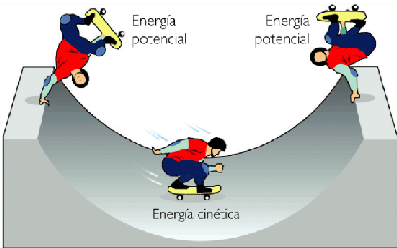 |
|
|
 Primo Primo
 Precedente
10 a 24 de 24
Successivo Precedente
10 a 24 de 24
Successivo
 Ultimo
Ultimo

|


























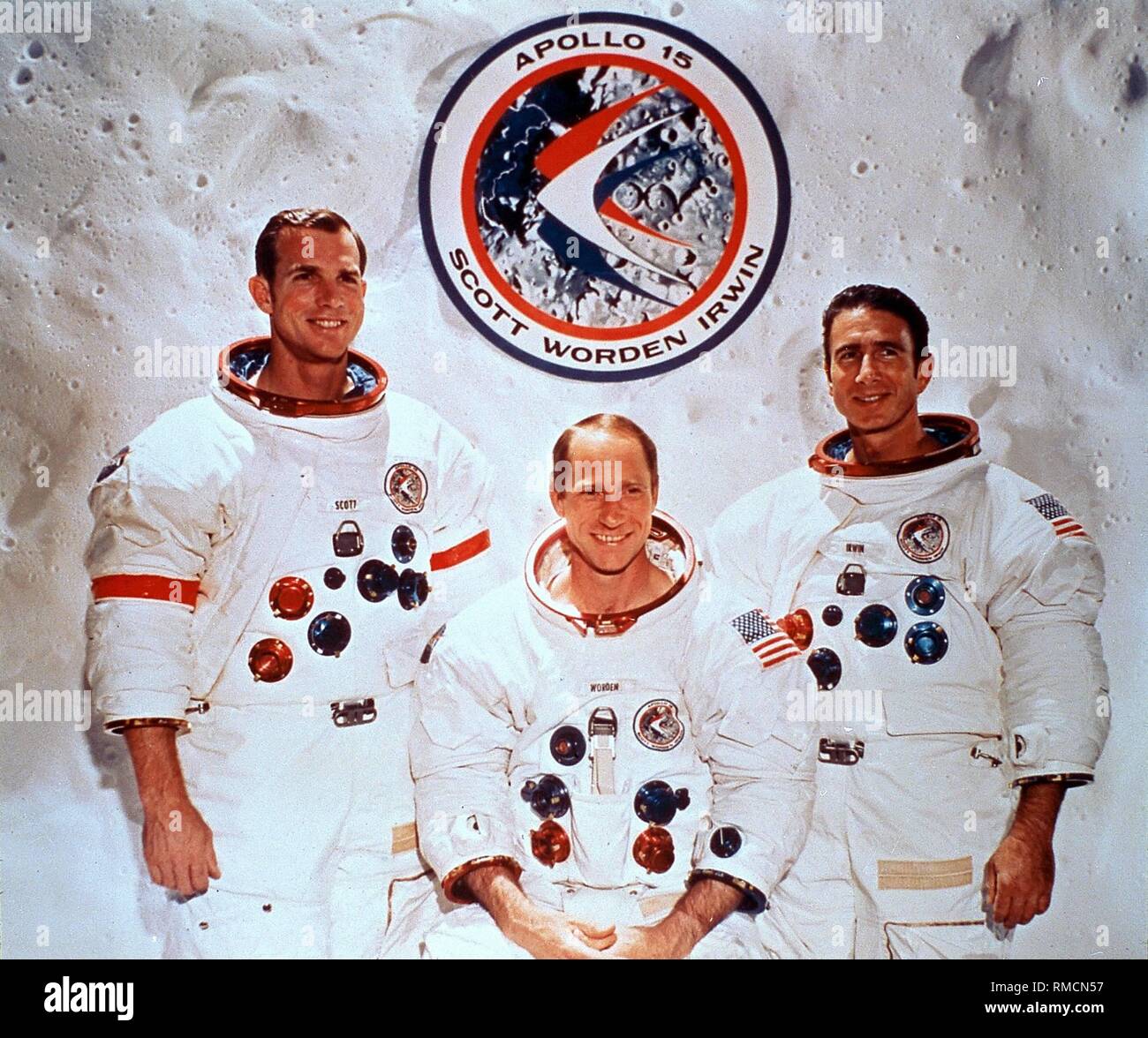





























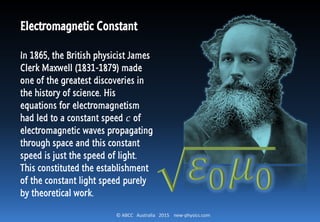























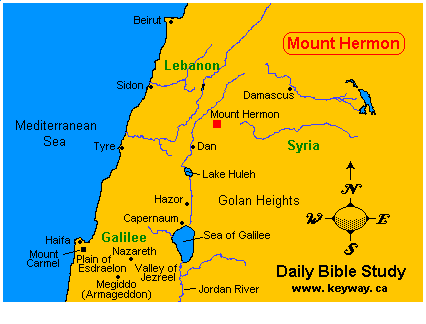




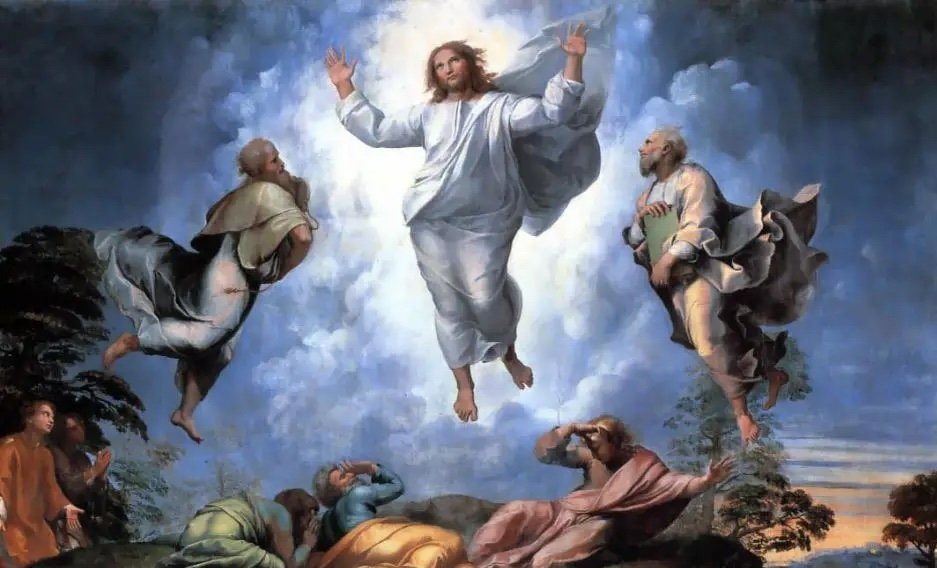





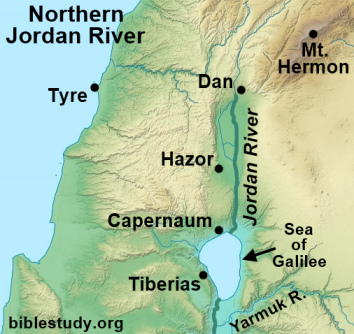
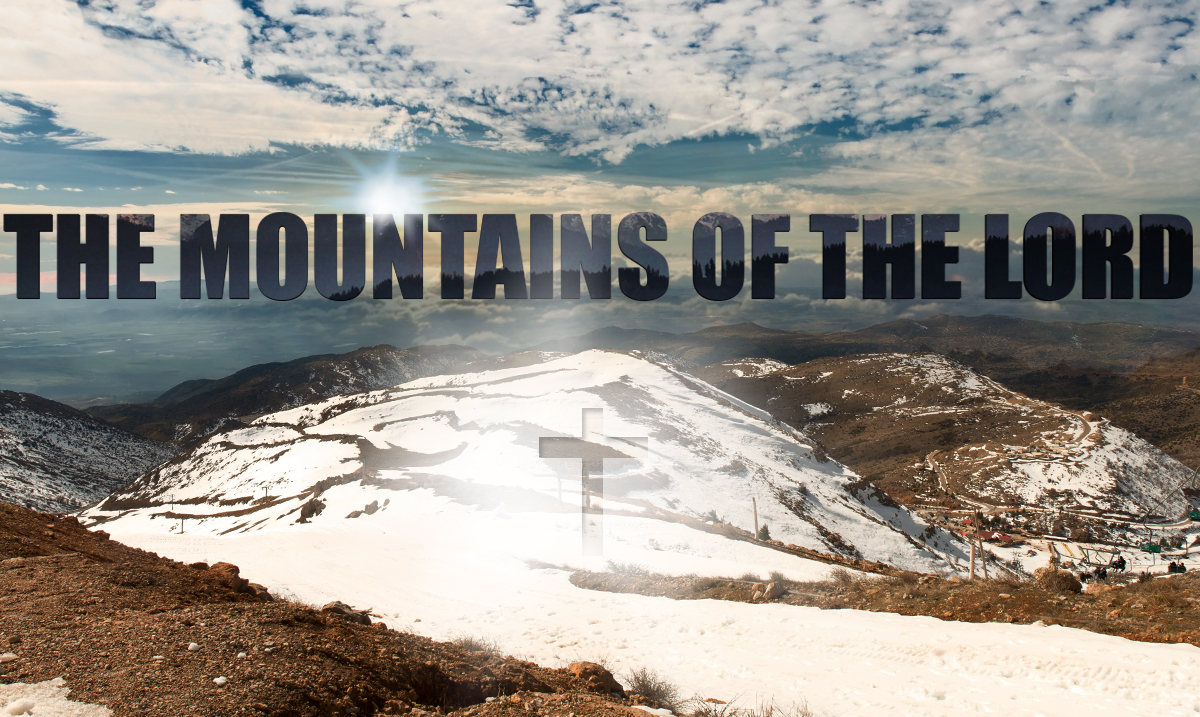




![Revelation 1:14 (lsv) - and His head and hairs [were] white, as if ...](https://img2.bibliaya.com/Bibleya/verse/revelation-1-14-lsv.jpg)

















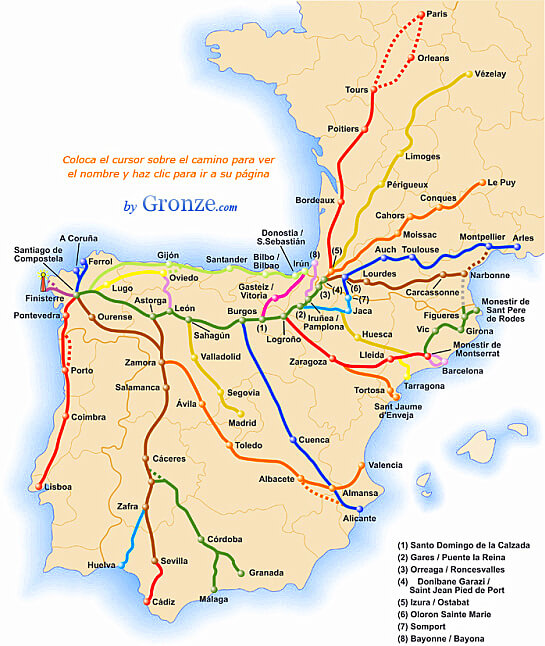




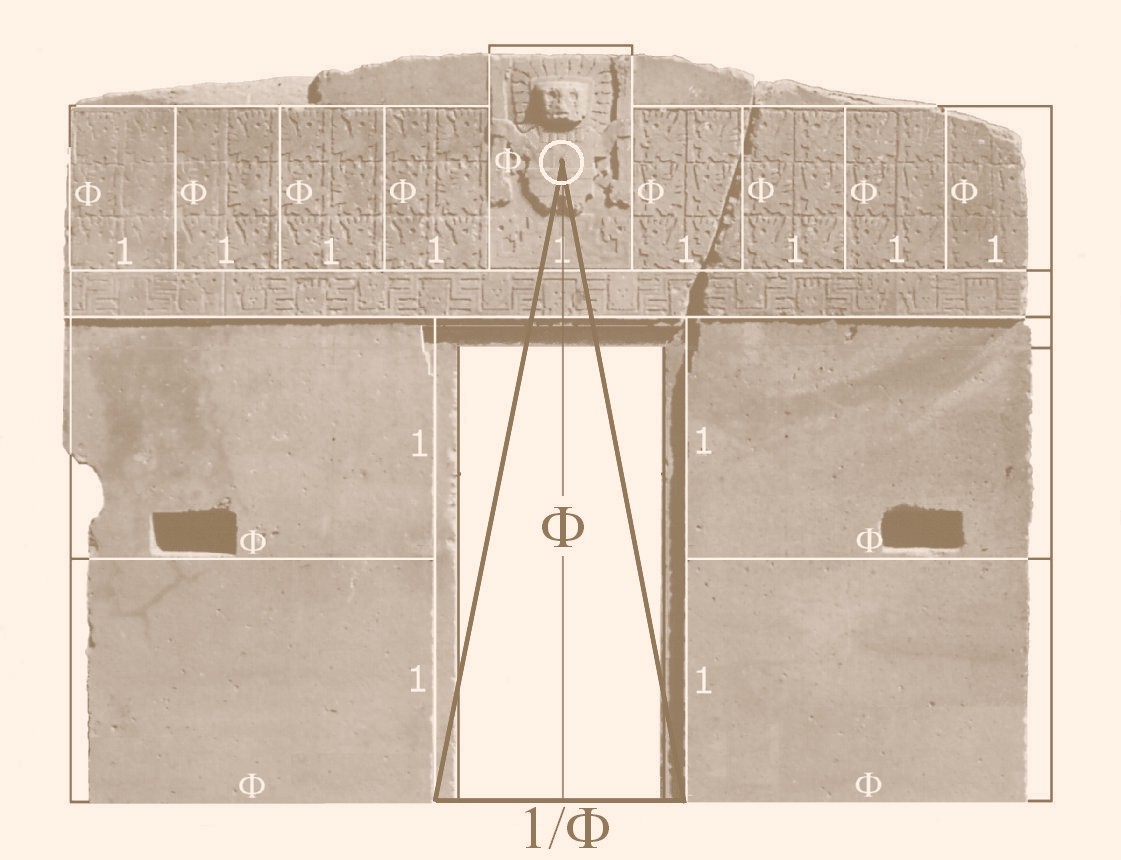


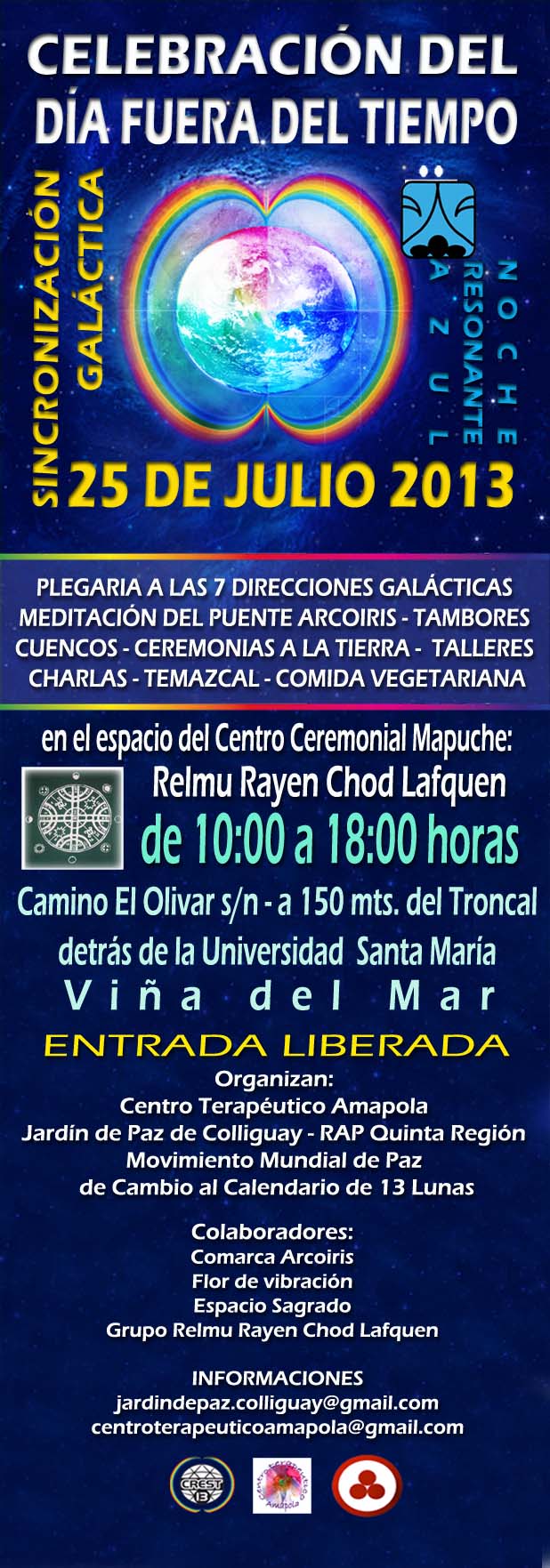

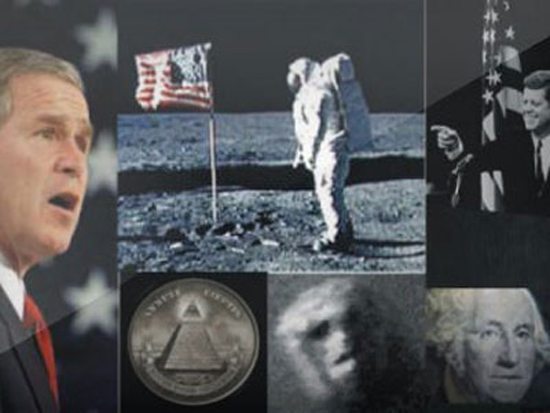



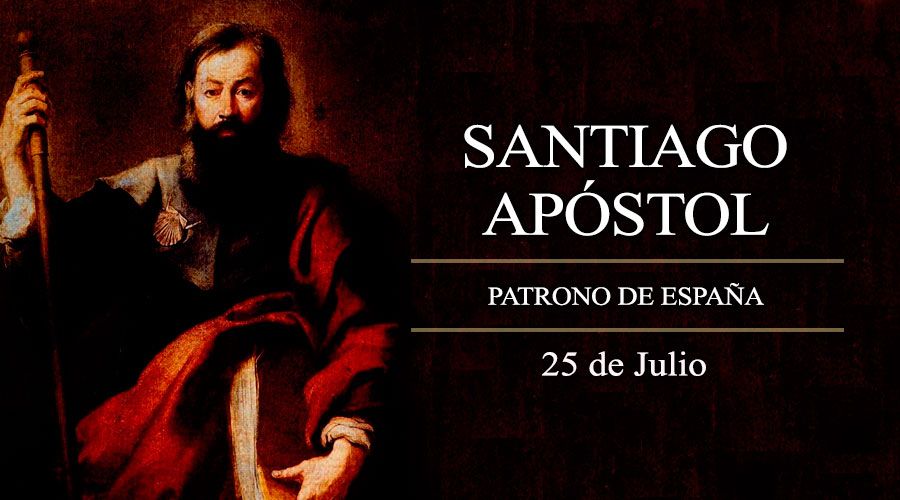












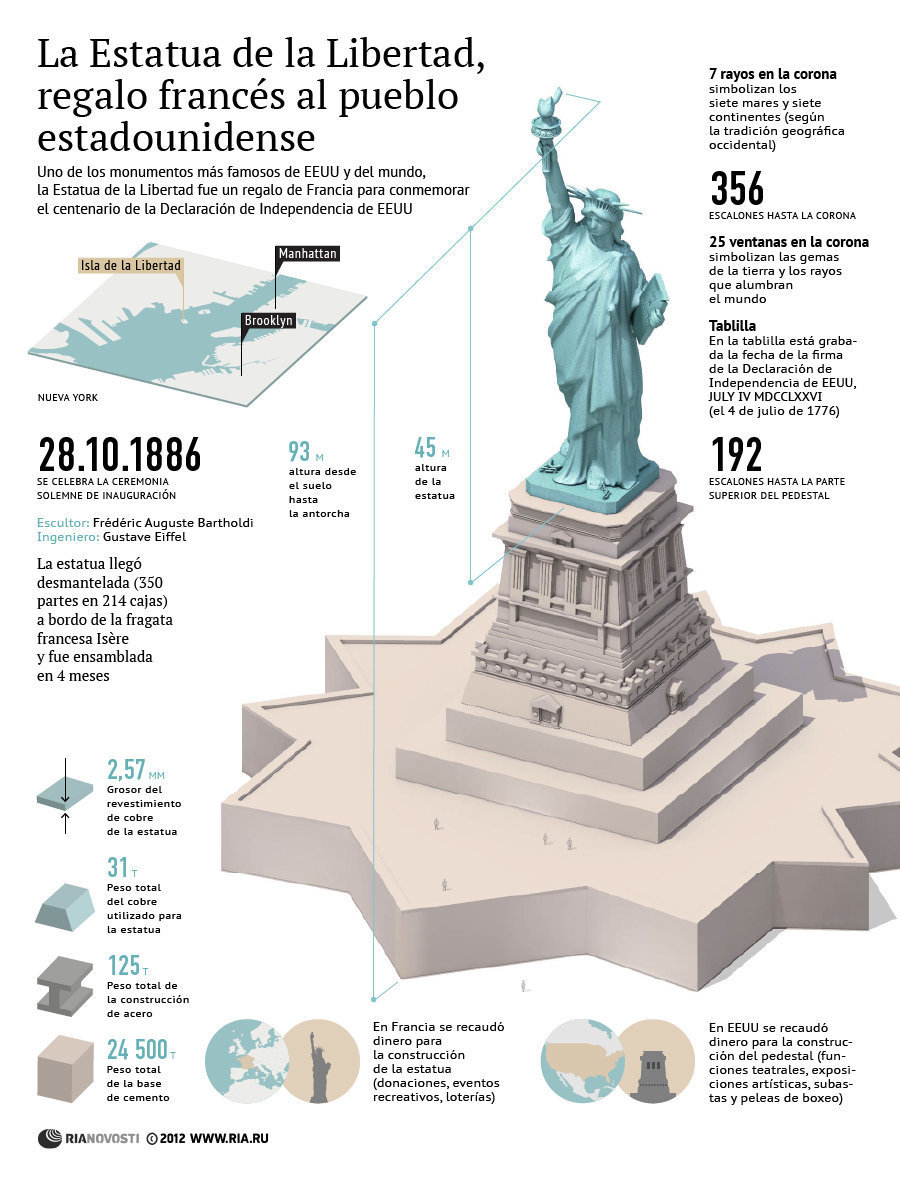



![Stargate Special Edition [Reino Unido] [DVD]: Amazon.es: Kurt Russell: Películas y TV](https://m.media-amazon.com/images/I/51Gr2lgt03L.jpg)
